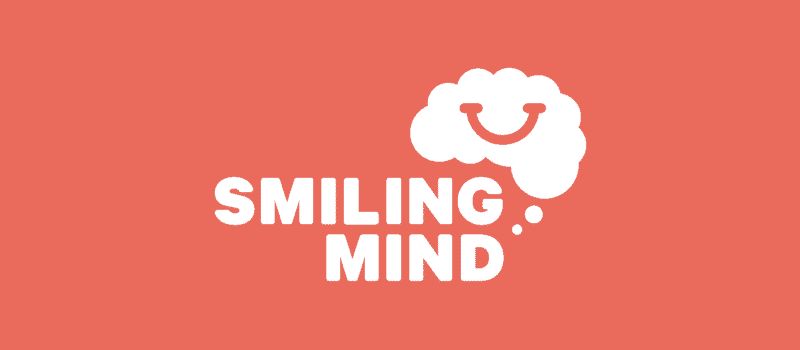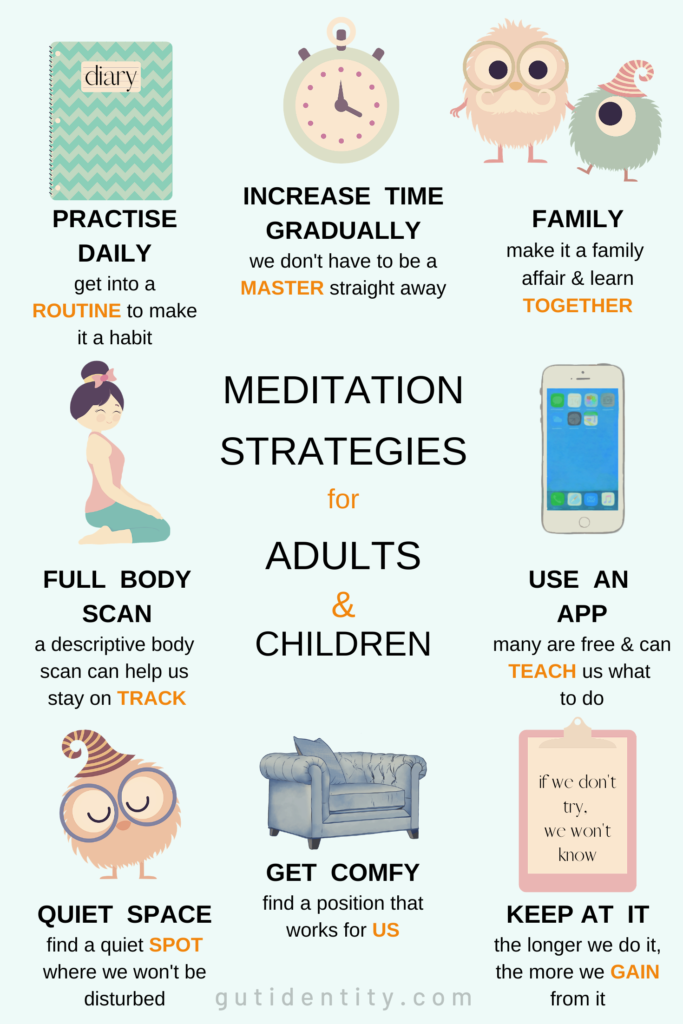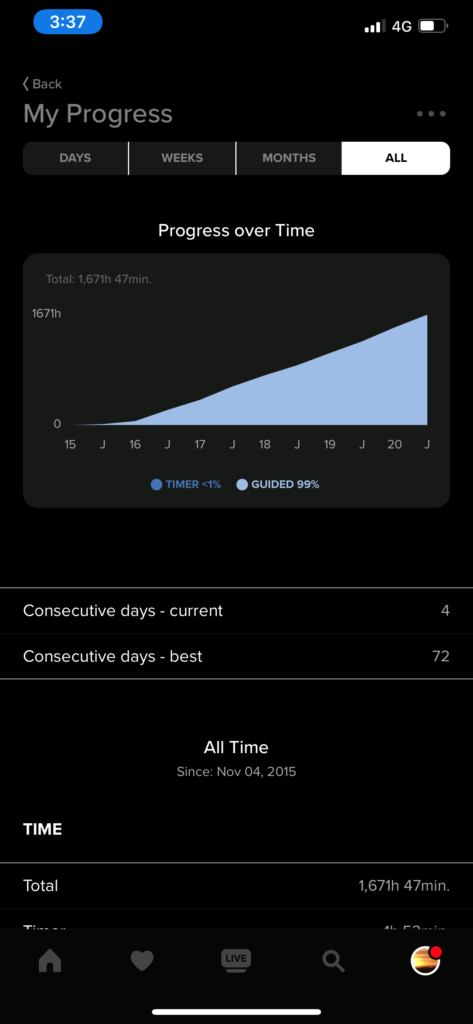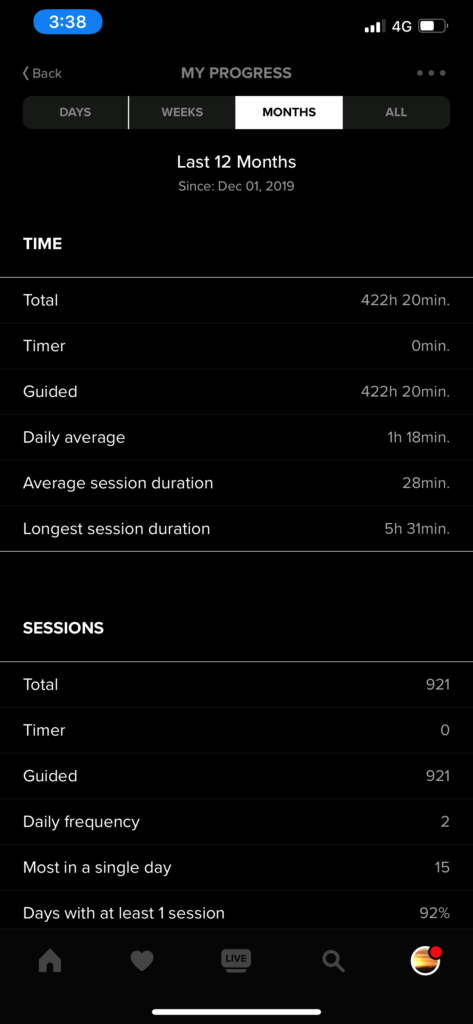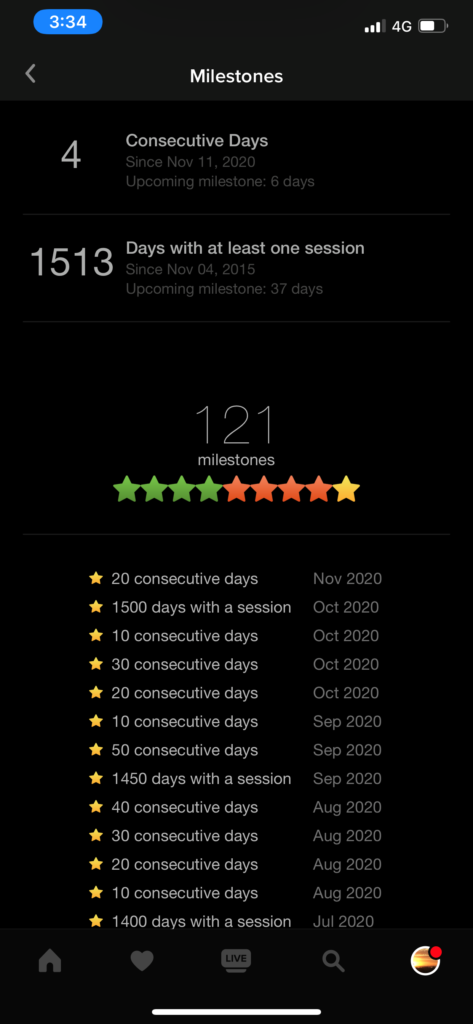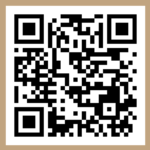Meditation can help with developing an awareness of the storm within so we can better understand our ‘self-talk‘ running in the background. By going into the storm, it can help us feel more ‘at ease‘ with being alone with ourselves, and start to notice the content of the ‘self-talk‘ program our mind plays.

Having just minutes away from the outside chaos provides an opportunity to ‘think‘ about how we are ‘thinking‘. It gives us the ‘space‘ to explore ‘what‘ we are ‘listening‘ to, to enable us to be more conscious of our thoughts and our behaviour.
While functioning as a band-aid type measure in the short-term, the individual long-term benefits of meditation and developing ‘awareness‘ of this for me, have been profound.
Both the band-aid and long-term strategies, provide an opportunity to go within without the need for anything external to calm. They help us become aware of the ‘self-talk‘ process which helps us be less ‘clingy‘ to our thoughts through our awareness.
Thinking about thinking

One of the biggest bonuses I’ve had from regular meditation is that I’m aware of the ‘self-talk’‘ process going on in the background. By this I mean, we often tell ourselves things in our head. These could be negative or positive depending on what’s happened or is happening.
Through having an awareness of this process, it helps me to not attach to the ‘conversation‘ which then stops any ‘physical‘ reaction caused by ‘holding on‘ to this self-talk. For example, thinking about something upsetting can then produce feelings of stress, which in turn produces more thoughts in a loop-like cycle. It can be highly addictive causing people to stay in those negative patterns of self-talk.
Find out more about how to break the habit of addiction to stress and negative thoughts by listening to this clip from Dr Joe Dispenza. It’s well worth it.
This holding on often occurs without us even knowing, producing a ‘feeling’ to go with the ‘thought’. Through this awareness, it’s easier to see a pattern, and move on.
Recognising the ‘spin’ from within the storm
By ‘spin‘, I mean where self-talk about the past or the present moment, may negatively impact how we feel, causing us to get angry, sad, annoyed, upset etc… Being able to recognise when in the spin, can help bring us back to centre more easily and a lot faster.
Being able to ‘get out‘ of the ‘spin‘ so to speak, is possible through the observation of the self-talk process and the feelings it may provoke. This can be achieved through the awareness of observing our self-talk patterns.

After developing an understanding of how meditation helps to observe self-talk, it became, and still is, a practice I continue to use and benefit from. Formally practising meditation is something that does require discipline and I have to make sure I put aside the time to do it every day. I make it top priority.
Let’s explore the top reasons why most people don’t even want to try at all.
Top reasons:
I don’t have enough time.
I need to be taught how to do it because I don’t get it.
I don’t need to do it, I’m already on top of things.
I don’t have the concentration for it.
It makes me feel angry and frustrated.
And these would be my answers
Number 1 – make it a priority and learn. What have you got to lose by trying?
and ……
What do you spend your time on? Work out where, when, why and how you spend your time so you’re aware of it. If we’re more aware of how we spend our time, we can make a plan to change it.
I taught myself. Yes it takes time to do it, but it’s totally possible if you want to. It’s all about priority and using the time to actually do it.
If you don’t need to do it and you feel fine, that’s awesome. It still might be beneficial to learn it in case you know someone else who could benefit from it, like a child or young adult who may be struggling.
If I can learn to concentrate on it, trust me, anyone can.
If you feel angry or frustrated, my suggestion would be to leave it for a while. If this happens to me, I will choose a very short meditation to do to return to centre. If I’ve already started, I’ll cut it short without giving myself a hard time. There’s no point getting more frustrated and then blaming it on a practice that aims at making me less frustrated. I’m not perfect at it and nor do I have to be. I’m still learning and will continue to learn as I go.
Why don’t people just start meditation?
If I hazard a guess why most people don’t even want to start, I think it’s more to do with the fact that many people are ‘uncomfortable‘ addressing the ‘self-talk’ going on. It’s certainly an interesting thought to ponder, isn’t it? It can be a lot easier to fill up our time with external ‘things‘, than facing the storm within. The trick is to find balance.

Even if it’s incredibly uncomfortable, just grab some ‘wet-weather’ gear and go for it! It doesn’t have to be a lengthy, perfect, or even close to it practice, because that’s not the point. Just give it a go and keep trying. Observe.
Learn to ease into understanding and observing the self-talk process running in the background. It does get easier.
This is how I got started.
Find a Quiet Space

In all seriousness, find a cupboard if you need to. When first getting started, it can be an easy excuse not to start by saying there isn’t anywhere for me to go. If you have your own bedroom, use that. If you don’t, find a cupboard.
I found it easier to lock the bedroom door so I knew I wouldn’t be interrupted. Use a ‘do not disturb‘ sign if that helps.
In order to fully be in the moment and relax into what you’re doing, there’s nothing worse than anticipating an interruption at any moment. That’s certainly NOT relaxing. Use a sign!
Get Comfy & it doesn’t matter where

Bed, couch, office chair, floor, beanbag or on a towel outside. It doesn’t matter where but it helps to be comfortable. If you have a problematic back or other body part, then sitting on the floor might not be the go. 90% of the time, I do my meditation practice on my bed.
The most important thing is to just do the best you can, where you are, with what you’ve got. Even on an office chair at work would do.
Using headphones is also an option to do a 3 -5 minute body scan or breathing exercise. Even a 2-minute breathing activity can make a world of difference to our day. Yes! Just 2 minutes can help bring about the awareness of our self-talk. Listen.

If you have children, wait until they’re in bed if you have to care for them, or get someone else to watch them. OR, do it with them and learn together. Children benefit just as much as us adults and it’s a life skill that they can use forever.
Make it a family affair
If you have kids or are living with other people, make it a group effort. Set some time aside to teach little ones how to do it. This short-term effort can make a massive difference down the track.
The side-effects of meditation seen in children and young people that I’ve noticed are:
-they were calmer
-less hyperactive
-less reactive
-more focused
-more on task
-and overall, much happier afterwards
I noticed these side effects in the students I taught and worked with over the 20 years I was a teacher in a variety of roles.
Who wouldn’t want to be calmer, more focused, less reactive, and happier? ALL children DESERVE the opportunity to be taught strategies to achieve this. Everybody does.

I’ve used different meditation techniques with students at school and in private practice, and they’ve all told me how relaxed they feel afterwards. This includes students who have ASD and ADHD. They were ALL able to do it, including me, and I have ADHD.
Read more about how Mindfulness Meditation had positive results in a recent study HERE.
Use an app to get you started
I taught myself by seeking the information I needed. I was given a book from my Aunty that had way too much text, and I struggled to concentrate on reading. So I found the author of the book and watched him on YouTube instead. I then watched more YouTube clips, and just started. I’m forever grateful to my Aunty for introducing me to the concept of meditation.
I’ve put this in another post, but here it is again. This clip is over an hour-long, but it gives a good explanation of how Jon Kabit-Zinn, taught staff at Google about Mindfulness. It’s a really good place to start to get an understanding of what Mindfulness is without having to read a very, very, very lengthy novel.
Later on, I did an online course through Monash University which taught me so much more. Although I knew what to do, I also went through the Smiling Mind app which is also a great place to start, as you get walked through the process.
The Smiling Mind app clearly explains what to do and guides us through the process of understanding where we breathe in the body, recognising thoughts, and watching thoughts come and go.
Before I started meditation, I was breathing through my chest which can signal to the body that I’m in panic mode. No one wants to be in panic mode for long periods of time. That’s why having an awareness of how and where we breathe, is important.
Keep at it, build it up
Let an app walk you through the steps of what to do and just go with it. It’s good not to overthink it and go with the flow.
To join up for free at Smiling Mind, click their icon below and it will take you to their website. Their program is set out in an easy-to-understand way, and it’s a good place to start, especially if you want to learn with your family or children.
After practising for several years, I also went to some more courses to further my learning including learning how to teach meditation to children and young people.
Smiling Mind is good because it’s broken up into age groups so the language is adjusted to suit. It provides the perfect opportunity to teach it to young people and also to begin, or continue learning and practising as adults.
This practice, also helps us notice the theme of our self-talk running in the background. It helps us become aware of it. Our self-talk is very powerful and can affect how we feel, often without us even realising it.
Try a Bodyscan to feel the tension in the body

This may sound counterproductive, but by doing a body scan, we can get a good idea of where our body is tensing up.
Body scans are great for focusing on individual parts of the body one part at a time. When I first started doing a body scan, I realised just how tense my body was. I had no idea I was holding so much stress in my shoulders, hips and even behind my eyes.
Some of the body scans I was doing, did a thing called ‘progressive muscle relaxation’. This strategy helped me to tighten each muscle at a time and then release it. I could then feel the difference between how I was holding a muscle, and then what it felt like when it was relaxed. I was hooked after this.
Practise Daily if you can
Even a few minutes a day can help awareness grow. Meditation is good as short-term relief but the long-term benefits on how we feel are worth it.
By doing it regularly, I’ve found that I feel calmer in general. I’m better able to think clearly and am less reactive to external events and self-talk. I’ve been meditating for around 8 years now. There have been weeks in the past when I haven’t, but by going on and off, I now see the benefit of doing it daily and from this, exploring other types of meditations which is where I’m at now.
Use Insight Timer to access different types of meditations
I can highly recommend the app ‘Insight Timer’. It’s a great app for a number of reasons. Not only does it seem to have every type of meditation under the sun available for free, it also keeps stats on achievements.
Click the image below to go the Insight Timer website. Their app is free to download but you can pay a yearly subscription to access more. A yearly subscription allows you to download meditations and use them when offline.
Seeing progress can act as a reinforcer to keep us going. It can motivate us to achieve more.
Increase time gradually

It’s so important to note, YOU don’t have to sit down for 45 minutes straight away. Some people start with 3-5m minutes, while others jump right in and do longer. You have to do what is right for you, in your situation.
I started meditating with a body scan for 45 minutes because at that point in my life, I needed to find calm quickly. I started this way because it was best for me at that particular moment.
Currently, I do a daily body scan meditation ranging from 25-35 minutes. I do another 2 x 10-minute meditation right before going to sleep called Theta Dimensions 10 which is a combo of natural and electronic sounds mixed with binaural beats. This helps me feel more relaxed before trying to fall asleep. I’ve been using this method for around 4 months now and find it helpful.
I built my practice up gradually over 8 years and now I experiment with other forms of meditation. But that’s a whole set of new posts right there, so stay tuned.
Do what works for you!
Everyone is different. Do what works for you. Just give it a try without judgement and see the results for yourself.
Related Post – Meditation and Adult ADHD
Further Info & Reading
Mechanisms of Change in Mindfulness-Based Cognitive Therapy in Adults With ADHD – paid article but the abstract is free
Clinical Application of Mindfulness-Oriented Meditation: A Preliminary Study in Children with ADHD
Progressive Muscle Relaxation – Department of Health – Western Australia
Auditory Beat Stimulation and Its Effect on Cognition and Mood States


